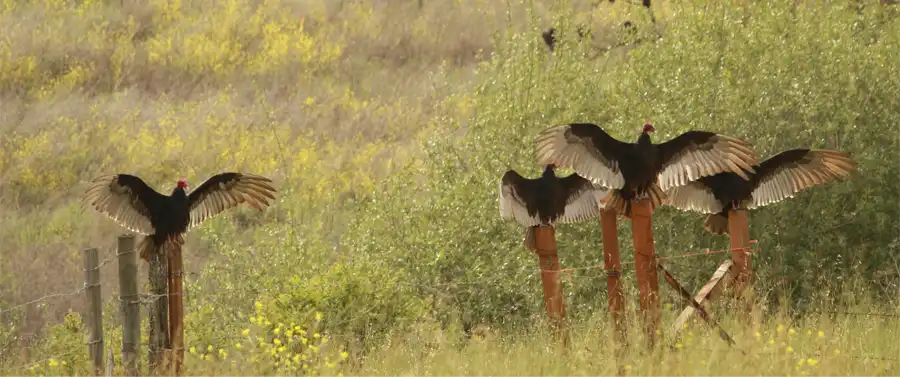
Have you ever glanced skyward over Central Florida only to see an ominous group of large birds, riding the thermals in wide, lazy circles, casting long shadows on the ground below? If your answer is yes, you’re not alone. These voyagers of the sky aren’t just any birds but Turkey Vultures, colossal birds of prey holding many fascinating mysteries within their extraordinary behaviors and habitats. Largely misunderstood and unfairly maligned due to their scavenger lifestyles, Turkey Vultures are actually an essential part of nature’s clean-up crew, helping to keep our environment free of dead animals and potential sources of disease.
Their unique lifestyle unfolds in their behaviors, transforming a seemingly daunting character into a magnificent feat. These avian marvels possess some of the most intriguing traits in the bird kingdom. From their keen sense of smell, atypical for birds, to their rather ungainly foraging habits – feeding on carrion doesn’t exactly inspire admiration in us after all. Yet, these behaviors reveal a complex, highly specialized creature that plays an important ecological role. Their survival strategies, feeding techniques, and even their characteristic chilling flight, are all deeply-rooted adaptations weaving a fascinating tale of survival and flourishing in the stark wilderness.
When it comes to their habitats, Turkey Vultures are no fussy residents. They have a grandeur and adaptability that sees them thriving in diverse landscapes – be it the expansive grasslands, the dense woods, or the rugged mountains. Each habitat presents its unique array of challenges, intricacies, and opportunities, which these birds navigate with an enviable finesse. Now, are you not curious to delve deeper into what makes these creatures so captivating? Pack your binoculars and notebooks, as we’re about to embark on a journey to explore the characteristic features of the Turkey Vultures, opening up a new world of understanding these flighted wonders better!
What Does the Turkey Vulture’s Diet Consist Of?
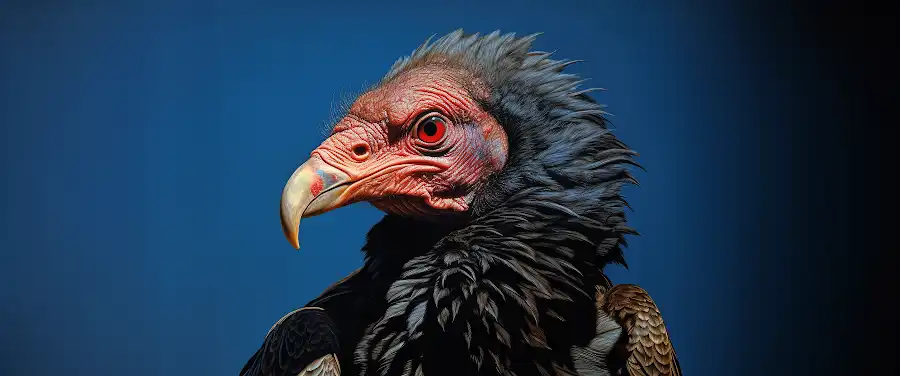
Turkey Vultures, particularly those residing in the central region of Florida, are known for their diverse diet, predominantly comprising carrion. Their exceptional scavenging behavior underscores their significant role in the environment as nature’s cleanup crew. Given their peculiarities, Turkey Vultures have aroused curiosity, prompting investigations into their unique feeding habits and prey preference.
Despite their somewhat ominous demeanor, these creatures feed mainly on dead animals, a trait that epitomizes nature’s way of efficient refuse disposal. By consuming carcasses, they suppress the spread of diseases and contribute to maintaining ecological health. Their diet comprises various types of carrion, ranging from small rodents to larger deer. An intriguing aspect of their feeding method is their strong olfactory sense, which they use to locate their meals.
Notable Scavenging Trait
The Turkey Vulture’s proficiency in detecting the scent of an ethyl mercaptan—a gas produced when animal bodies decompose—sets it apart from other bird species. Complementing their scent detection is their keen eyesight, enabling them to spot carcasses from high altitudes. According to a study, the joint action of their olfactory and visual senses helps them efficiently scour the vast landscapes of Florida for food.
However, it’s worth noting that Turkey Vultures aren’t exclusive carrion eaters. In some cases, they augment their diet with fresh meat, fruits, and invertebrates such as insects and grubs, indulging their prey whenever accessible.
The multifaceted culinary habits of these vultures clearly illustrate their impressive adaptability and their integral role in preserving natural balance. Nature designed these creatures to act as hygienic custodians, a task they efficiently execute while demonstrating remarkable behavioral characteristics.
As we delve deeper into the life of Turkey Vultures, let’s explore another facet of their existence. Where do these captivating creatures live and nest? Prepare to be further fascinated by the life of these intriguing scavengers.
Where Do Turkey Vultures Live and Nest?
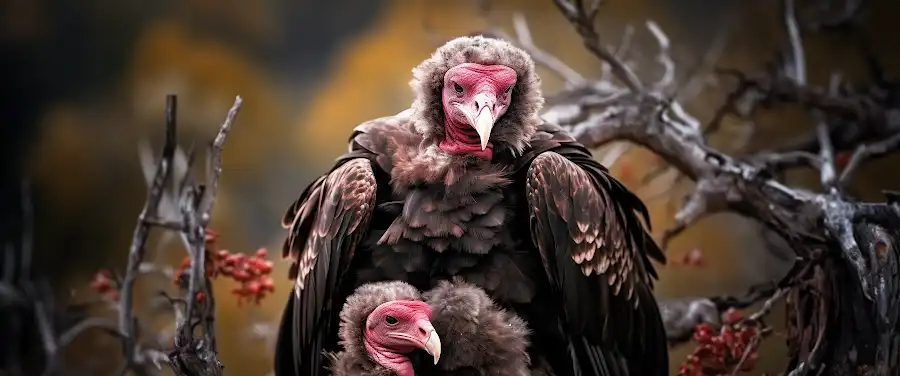
As inhabitants of the Western Hemisphere, turkey vultures, scientifically known as Cathartes aura, display a rather peculiar geographical distribution. Known for their vast-ranging presence from South Canada to the southernmost point of South America, these scavengers are no strangers to diverse environments across the globe.
Their diet, defined by the carrion they consume, points to their habitat preferences. Open landscapes such as grasslands, savannas to forested areas, and deserts are among their favorites. Due to their rather generalist approach, you can also find them loitering in suburban areas, swarming around your leftover junk — an unexpected yet typical sight.
Next, let’s dive into their nesting habits. Unlike their bird brethren who indulge in constructing elaborate nests, turkey vultures adopt a less intricate ḿethod. Grounded nests are their forte, preferably in sheltered areas such as hollow logs, dense thickets or deserted burrows. Raising their young ones takes roughly ten weeks, during which the parents take turns in nurturing and feeding.
Unfortunately, human impact on these habitats is a growing concern. Encroachment on natural land for construction and commercial activities is increasingly shrinking their living spaces.
To shed light on their diverse living patterns, below is a table depicting varied habitats across continents and the corresponding impact of human activities.
| Geographical Region | Habitat | Human Impact |
|---|---|---|
| North America | Forested areas, suburban regions | Increased urbanization and deforestation |
| South America | Grasslands, Savannahs | Land agriculture and construction |
| Central Florida | Wetlands, forests, suburban regions | Rapid development and habitat destruction |
As reported by Defenders of Wildlife, the extensive geographic range of turkey vultures buffers them against the sharp decline facing other bird species. However, measures to curtail human activities affecting their habitats merit urgent attention.
Transitioning from their nesting habits, let’s delve into the intriguing behavior patterns of turkey vultures in the next section. How do Turkey Vultures behave?
How Do Turkey Vultures Behave? – Exploration of the Basic Traits of Turkey Vultures

Turkey vultures, scientific name Cathartes aura, exhibit behavioral traits that are both fascinating and intriguing, particularly with their survival methods in the wild lands of Central Florida. Known commonly for their impressive but eerie demeanour, Turkey vultures have fascinating flock behavior. These birds prefer a rather communal setting as opposed to a solitary lifestyle. They are typically observed roosting in large numbers on trees, transmission towers, or even human structures with open space.
Understanding Their Flock Behavior and Solitary Lifestyle
Turkey vultures demonstrate a unique social structure that is exhibited in their day-to-day actions and interactions. They form large, tight-knit colonies when nesting, and a noteworthy aspect of the turkey vulture’s flock behavior is their reliance on these communities for protection against predators and optimal temperature regulation.
While they have an affinity for community, these birds are not exactly social butterflies all the time. A shift from cooperative community behavior to an emphasis on individual survival is seen during their hunting practices. While searching for a meal, Turkey vultures often prefer to forage alone. They exhibit a certain level of resourcefulness, being perfect embodiments of the “survival of the fittest” phenomenon.
Analysis of Their Hunting and Flight Patterns
Interestingly, turkey vultures are not hunters but scavengers. They feed mainly on carrion, the decaying flesh of dead animals. Their powerful sense of smell is their key weapon when it comes to finding their next meal. Their hunting patterns are largely influenced by their olfactory senses, which are significantly stronger than other bird species.
A significant trait of the turkey vulture is its distinct flight pattern. These birds are recognized by their V-shaped flight pattern and wobbly, unsteady flight, which is quite a sight to behold. This flight arena is also a space where their social hierarchy gets demonstrated. These birds display their dominance or submission through unique flight acrobatics.
Between their flock behavior, hunting patterns, and flight nuances, turkey vultures’ behaviors paint a picture of both cooperation and individualism, necessitated by their instinctual drive for survival.
Turkey Vultures Behavior Traits:
| Traits | Description |
|---|---|
| Flock Behavior | Prefer communal setting, nest in large colonies for protection against predators and temperature regulation |
| Hunting Patterns | Scavengers; predominantly solitary during foraging |
| Flight Patterns | Distinct V-shaped flight pattern; demonstrate social hierarchy during flight |
Here’s a list of some fascinating facts about Turkey Vultures:
- Turkey vultures have a keen sense of smell that is not typical for birds. They use this to find carrion (dead and decaying animals).
- Turkey vultures play a valuable role in our ecosystem by efficiently cleaning up dead animals and preventing diseases from spreading.
- These are incredibly skilled flyers who rarely need to flap their wings and can stay aloft for hours, soaring in the skies.
For more comprehensive information about turkey vultures, you can visit the Cornell Lab of Ornithology site to gain deeper insights about these birds.
As we unfold the mysteries of the turkey vultures behaviors, let’s also take a enlightening journey through time as we explore how turkey vultures have evolved over time.
How Have Turkey Vultures Evolved Over Time?

Giving you a peek into the mysterious timeline of turkey vultures is truly an engaging task. From the evolution standpoint, these birds are a marvel. Turkey Vultures are beautifully adapted, showcasing evolution at its best. Over time, they have tuned their behaviors and habitats to survive in changing environments.
Before we delve into their evolutionary journey, let’s shed some light on these incredible creatures. They are commonly seen in the skies of Central Florida, renowned for their acute sense of smell and excellent survival tactics. They can locate carrion from miles away, a distinctive characteristic among birds.
The ancestral turkey vultures from the prehistoric era were quite different from the ones we see today. They gradually evolved into their current form, with growing capacities for soaring high, extreme smell sensitivity, and an exceptional immune system to resist toxins.
Here is an informational table signifying the remarkable changes in Turkey Vultures behaviors and habitats over the course of evolution.
| Evolution Timeline | Associated Change in Behavior | Habitat Shift |
|---|---|---|
| Prehistoric Era | Limited flight capacities | Dense forests |
| Early Evolutionary Period | Enhanced Soaring Abilities | Open spaces for flight |
| Middle Evolutionary Period | Developed keen sense of smell | Habitual to carrion-scented surroundings |
| Current Era | Robust immune system, scavengers | Diverse, adaptable habitats |
The harshest contemporary challenges for Turkey Vultures include deforestation, climate change, and human intrusion. Despite these odds, they have stood against the test of time with resilience and adaptability due to their remarkable behavior changes.
Various studies reveal an interesting fact about their survival strategy. When faced with scarcity, turkey vultures can survive without food for up to two weeks due to their flexible metabolism, a trait evolved over time.
Deforestation has minimized their natural habitats, compelling them to adapt to different environments. Currently, they inhabit a diverse range of places, from forests to suburban areas having a mixed-landscape of open fields, woodlands and wetland edges. Isn’t their adaptability striking?
Turkey Vultures teach a phenomenal lesson in evolution, thriving amid contemporary challenges. Their story of survival is testament to their impressive adaptability.
For further reading on how climate change affects the habitat and behaviors of these birds, visit National Geographic, a resource of high authority.
In the next section, we will delve deeper into another fascinating aspect of their behavior – Do Turkey Vultures migrate? Let’s continue our journey into the mysteries of these incredible creatures!
Do Turkey Vultures Migrate? – Facts About Turkey Vultures Migration Patterns
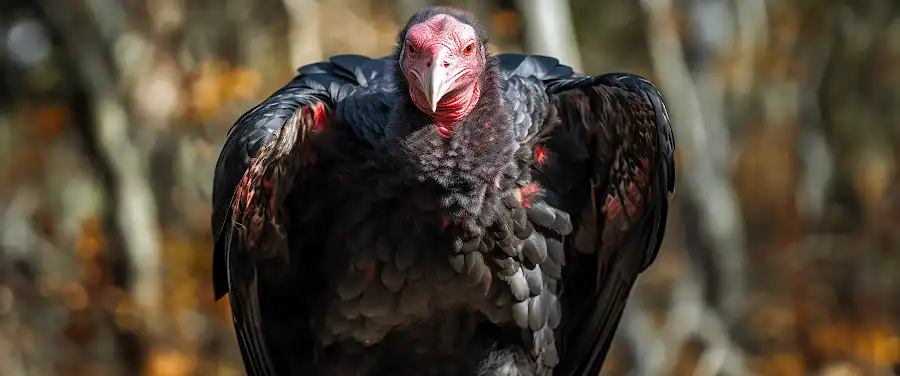
Yes, the fascinating and sometimes misunderstood Turkey Vultures do migrate! Living creatures unlike man-made machines, their migration patterns are astoundingly influenced by a collection of factors, encompassing a dance with climate change.
Turkey Vultures, scientifically known as Cathartes aura, are often misunderstood as sinister figures or harbingers of death. However, they play an essential role in our ecosystem by cleaning up carrion and reducing the risk of disease transmission.
When the cold winds of the fall season begin to blow, these creatures take to the sky, covering great distances from chilly regions in Canada and the United States, southwards to Central and South America. Untrained eyes may be confused, seeing the migration patterns of these birds as erratic due to their broad wings touched with silvery undertones, dancing with the wind as they soar up high.
The table below provides a snapshot of some fascinating facts about the extent of Turkey Vultures’ migration and the factors influencing their migratory behavior.
| Factors Influencing Migration | Detail |
|---|---|
| Habitat | Turkey Vultures are not fans of the cold and tend to head south to warmer climates during the winter season |
| Food availability | They follow the pathway of abundant food, which primarily consists of carrion |
| Weather conditions | Severe weather conditions can affect their migration patterns |
| Breeding | Studies show male turkey vultures return to their breeding areas earlier than females |
Climate change poses another challenge, impacting Turkey Vultures migration and habitats. With global temperatures fluctuating and weather becoming increasingly unpredictable, their migration patterns may be thrown into chaos. As per a survey report from Audubon Society, several bird species, including the Turkey Vulture, are at risk due to changing climate patterns.
Their typical habitats in Central Florida range from vast grasslands, deserts, to subtropical forests, and beyond. They are not particularly choosy about their roosting grounds, nesting in caves, crevices, tree hollows, and even abandoned buildings. These locales offer an abundance of decaying matter, making it a veritable buffet for these clean-up artists of nature.
Given this complex ballet of influences, it becomes clear that Turkey Vultures have intricate migration habits. They need to adapt constantly based on food availability, changes in weather, and breeding tendencies laid down by nature’s clock. Our role? To maintain balance in their habitats and prevent drastic climate change, thus ensuring these vital scavengers can continue to play their crucial role in our ecosystem.
In putting the lens to the Turkey Vultures’ migration patterns and habitats, we unveil the interplay of a host of factors that come together, shaping these creatures’ lives and challenging our often misconstrued perceptions about them. Don’t be too quick to judge these scavengers. As we transition smoothly into the next section, we reveal some common misconceptions about Turkey Vultures that may just leave you pleasantly surprised!
What Are Common Misconceptions About Turkey Vultures?
Dispelling some of the most rampant misconceptions unfolds a unique understanding of the Turkey Vultures’ behaviors and habitats. Turkey Vultures, often misjudged because of their quirky and sometimes, unsettling lifestyle, play an indispensable role in our ecosystem. Here we are going to debunk some myths and uncover the truth about these unique creatures inhabiting Central Florida.
Their Role in the Ecosystem: More Than Scavengers
A common myth about Turkey Vultures is that they are mere scavengers, feeding off the dead and decaying matter. But did you know their feeding habits contribute significantly to waste management and disease control? According to The National Wildlife Federation, Turkey Vultures can eat up to 2 pounds of carrion in a single meal, helping to keep the environment clean and reducing the spread of diseases.
Their strong stomach acids neutralize harmful bacteria and viruses present in the decaying matter they eat. By doing so, they prevent the spread of these diseases, which otherwise could spread and harm other wildlife or even humans. Therefore, they play an essential role in maintaining a healthy ecosystem.
Turkey Vultures: Misunderstood Creatures
Another prevalent misconception about Turkey Vultures is that they are dangerous and aggressive. Contrary to this, Turkey Vultures are actually non-confrontational and prefer to fly away when threatened. To deter predators or when feeling threatened, they resort to an unappetizing strategy of regurgitating their food, making themselves less appealing to potential aggressors.
Turkey Vultures are also quite social and familial, with offspring staying with their parents for months after hatching. Their remarkable sense of smell sets them apart from other bird species. It helps them locate carrion beneath the forest canopy, enabling them to play their part in waste management.
By dispelling these myths, we can appreciate the crucial role Turkey Vultures play within our ecosystems. They are unsightly heroes who help maintain a balance, taking care of the dead and decaying and preventing the spread of diseases.
As we venture deeper into unraveling the mysteries surrounding Turkey Vultures’ behaviors and habitats, it is pertinent to inquire about their survival strategies. Do Turkey Vultures have predators? Let’s explore this question in the next section.
Do Turkey Vultures Have Predators? – Identification of Turkey Vultures Predators
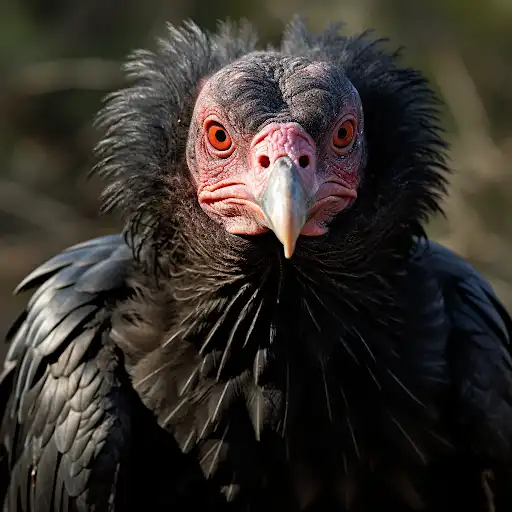
Believe it or not, Turkey Vultures, known scientifically as Cathartes aura, are less of a prey than you might think. In the wild, adult Turkey Vultures have few natural enemies. This is largely due to their size, formidable defense tactics, and somewhat ‘eccentric’ dietary habits.
Defending Against Danger
A distinguishing feature among Turkey Vultures is their unique defense mechanisms. When confronted by potential threats, their main line of defense isn’t to flee or fight but to regurgitate! Although this might sound slightly unpalatable, this ingenious method serves two purposes. Firstly, the vile smell of the regurgitated carrion is usually enough to deter most would-be attackers. Secondly, the act of regurgitation lightens their body weight, allowing them to take off rapidly if necessary.
One report from the Turkey Vultures Society highlighted that Turkey Vultures also use a bacteria-ridden fecal liquid to repel predators. They squirt this liquid onto their legs to cool down and onto predators to dissuade them from any pursuit.
Resilient Survivors
Even in view of potential predators, the impact is near minimal. Adult Turkey Vultures are rarely targeted, and survival rates are impressively high. Observations by the Florida Fish and Wildlife Conservation Commission indicate a minor impact on the population of Turkey Vultures caused by predators. Mainly due to their incredible ability to spot carrion from the sky, these vultures can afford to live in areas with fewer hiding places, making them less prone to predation.
While some juvenile birds can occasionally become targeted by larger predatory birds or mammals, the adults have cultivated quite an impressive survival rate. This is why in Central Florida, Turkey Vultures are a common sight, wheeling effortlessly on the thermals as they scan the ground for their next meal.
It is worth noting however, that while the Turkey Vultures are equipped to handle natural enemies, they are not immune to human activities. Amidst an era of rapid environmental changes, they face ongoing threats from habitat destruction, poisoning, vehicular collisions, and illegal shooting.
After learning all these intriguing facts about the survival behaviors of Turkey Vultures, you are probably keen to unravel more about these unique creatures. So, let’s nestle further into the world of Turkey Vultures. Stay tuned! The next topic we will explore is “## What are some interesting facts about Turkey Vultures?”. It’s sure to be a thrilling discovery.
What Are Some Interesting Facts About Turkey Vultures?
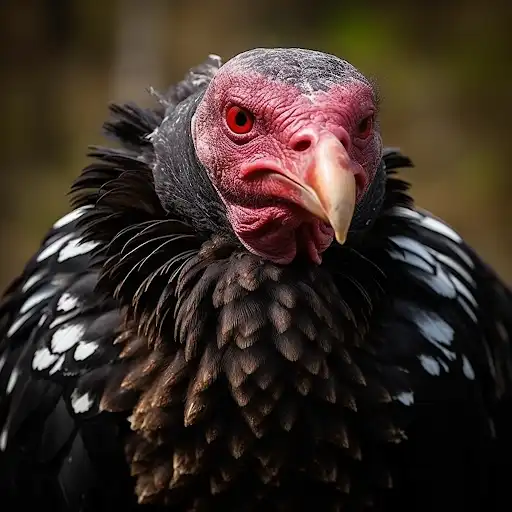
Turkey Vultures, also known as Cathartes aura, are uniquely built creatures that stand out for their remarkable traits and behaviors. From their fascinating physical attributes to their intriguing survival habits, these birds of prey indeed make for an intriguing study.
First and foremost, one cannot talk about Turkey Vultures without mentioning their most distinct feature – their bald heads. Contrary to what one might believe, their bald heads are not a mark of deprivation but evolutionary adaptation. Their lack of feathers on their heads prevents bacteria and parasites from nesting, especially when they dig into carcasses for food.
Speaking of food, these birds are nature’s waste management system. They feed mainly on carrion – decaying flesh of dead animals which prevents the spread of diseases from these decaying animals. They’re equipped with an incredibly keen sense of smell to find their food. Research suggests that they can pick up the scent of ethyl mercaptan, a gas produced by decaying animals, from miles away.
Moreover, one remarkable behavior observed in these birds is their mechanism of cooling off. They often urinate on their legs to lower their body temperature on hot days; a behavior known as “urohidrosis.”
The flight of Turkey Vultures is also an exceptional spectacle to observe. They fly in a ‘V’ formation and prefer to glide rather than flapping their wings. They use their broad wings to ride thermals – warm, rising air currents – up to great heights, then glide down to lower levels. According to the National Geographic, a Turkey Vulture can fly at a speed of 50 miles per hour and as far as 200 miles in search of food.
Turkey Vultures also have social behaviors like roosting. Roosting is when these vultures gather in large numbers to rest at night. Gear up to dive into more facts about the various species of these fascinating creatures in the subsequent section. ## How many species of Turkey Vultures are there?
Conclusion
Well folks, we’ve reached the end of our journey exploring the awe-inspiring world of Turkey Vultures behaviors and habitats! From their unique feeding habits to their migration patterns, these intriguing birds surely possess a world full of mysteries waiting to be unveiled.
Isn’t it fascinating how they clean our environments by consuming dead carcasses? Or how their excellent sense of smell leads them directly to their food? If you love nature as much as we do, you’d agree that Turkey Vultures are exquisite creatures deserving our utmost admiration and respect.
However, don’t forget about the fluctuating numbers of these vultures in Central Florida. Changes in their environment, such as habitat destruction and changes in food availability, have impacts on their populations. It’s a wake-up call reminding us of the critical need for conservation. Let’s talk, spread the word, and act to maintain the balance in our precious ecosystems.
Still thirsty for knowledge? Fear not! Further studies on Turkey Vultures behaviors and habitats are encouraged to uncover more of their mysteries, and we hope that you will be one of the curious minds to delve deeper into this fascinating subject. Remember, every piece of information adds up, and your contribution might be the key to unlocking more enigmas hidden in the avian world!
In summary, our understanding of Turkey Vultures is enriched by nuances of their remarkable behaviors and prevailing habitats. Our responsibilities, as nature enthusiasts and conscious inhabitants of the Earth, are to raise awareness about these majestic birds, actively contribute to their conservation, and perpetuate our learning curve by further investigating their habits and habitats. Conservation blends science and action – let’s ensure the survival of Turkey Vultures for generations to come!
Keep in mind that understanding the delicate balance of nature starts with knowledge and curiosity. So keep questioning, keep learning, and remember, every creature plays a pivotal role in maintaining our planet’s biodiversity.
Remember, as Albert Einstein once said, “The important thing is not to stop questioning. Curiosity has its own reason for existence.” So, let’s follow that ethos and continue our journey in unveiling the mysteries of nature.
Oh, and before we let you go, here’s a quick recap table of all you’ve learned about Turkey Vultures behaviors and habitats:
| Topic | Key Points |
|---|---|
| Feeding Habits | Scavengers; consume dead carcasses; excellent sense of smell to locate food |
| Migration Patterns | Migrate based on feeding availability; |
| Fluctuating Numbers | Impacted by habitat destruction and changes in food availability |
| Conservation | Critical need to maintain an ecological balance |
Frequently Asked Questions about Turkey Vultures Behaviors and Habitats
Table of Contents
- What Does the Turkey Vulture’s Diet Consist Of?
- Where Do Turkey Vultures Live and Nest?
- How Do Turkey Vultures Behave? – Exploration of the Basic Traits of Turkey Vultures
- How Have Turkey Vultures Evolved Over Time?
- Do Turkey Vultures Migrate? – Facts About Turkey Vultures Migration Patterns
- What Are Common Misconceptions About Turkey Vultures?
- Do Turkey Vultures Have Predators? – Identification of Turkey Vultures Predators
- What Are Some Interesting Facts About Turkey Vultures?
- Conclusion
- Frequently Asked Questions about Turkey Vultures Behaviors and Habitats




